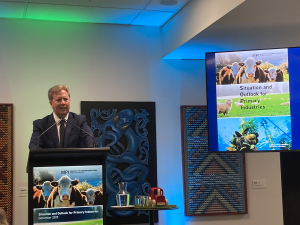Two new farms have been announced in China. In Indonesia, Fonterra is building a dairy nutrition blending and packaging plant.
Spierings is stamping his leadership on the co-op. He’s made it clear that Asia, in particular China and Asean nations, is where the co-op will invest and market vigorously for a growing market. And it’s a sensible approach.
According to the OECD, the six major Asean countries have rebounded from the global economic crisis, with medium-term growth prospects returning to pre-crisis levels. GDP growth will average 6% annually across the Asean-6 countries over 2011-15.
In China, any fears of cooling down in the world’s second-largest economy are evaporating fast. China’s economic growth will slow this year to 8.2% (from 9.2% last year) but rebound in 2013, driven by domestic consumption, the International Monetary Fund says.
At the same time growth is slowing in the EU and US dairy markets. So refocusing in China and Asean is smart.
With New Zealand’s limited milk supply, we have to tap into global milk pools. Consumption in China is expected to double by 2020 and the country will be consuming at least 70 billion litres of milk every year by 2020.
It is clear much of this growth in demand for dairy nutrition will be met from local production and Fonterra must be there for a piece of the action.
At the same time, Fonterra is also optimising New Zealand milk production; after all, its 10,000 farmer shareholders here form the bedrock of its milk supply base.
Fonterra already has big projects underway to improve the way it uses manufacturing plant in New Zealand, drive efficiencies and add value for customers so it can beat base commodity prices.
Spierings’ plan has Fonterra enjoying the best of both worlds: New Zealand’s premium quality milk supply and a growing global milk pool.
Spierings’s visionary and decisive approach will strike a chord with Fonterra shareholders. He laid out his plans and is already putting them into action. It’s all about taking the co-op to the next level.















